The Centenary of "Chromatography"
LCGC North America
This month's "Milestones in Chromatography" column commemorates the centenary of the two publications of M.S. Tswett first using the term "chromatography."
When seeing the title of this article, readers of LCGC might wonder: again an anniversary? After all, three years ago we already celebrated the centenary of chromatography with one of our "Milestones in Chromatography" columns, discussing the life and activities of Mikhail S. Tswett (1). Why are we repeating it — and why are we placing the name of our technique in quotation marks?
It is, of course, true that Tswett first described the principles of his new separation technique in 1903 in Warsaw, in a lecture at a local society of people interested in science and nature (2) that was published two years later in the society's periodical (3). In the lecture, he actually suggested two possible ways for pigment separation: adsorption precipitation and adsorption filtration (terms used by him at that time). In the first case, powdered adsorbent was added to the pigment solution that adsorbed some of the pigments; subsequently, the pigments were selectively dissolved by the use of various solvents. The second was a dynamic method, where the pigment solution was filtrated through the adsorbent, which was packed into the narrow tube of a filter funnel: some pigments passed unadsorbed through the packing, while others were selectively retained in different parts of this "column" (to use our present nomenclature). As we can see, the second method had all the principal features of chromatographic separation. However, at that time Tswett did not decide as yet which should be the preferred method and, reading his 1903 lecture, it seems that he actually favored adsorption precipitation. Also, as of 1903, he had not yet used the term "chromatography." The term was introduced three years later, in his two fundamental papers published in the widely read journal of the German Botanical Society (4,5), making it clear that by then he had decided on the dynamic technique. This maturation of his ideas was the result of the three years of hard work between the 1903 Warsaw lecture and the two publications in 1906.
Our present column is devoted to the centenary of these two papers first using the term "chromatography." We shall follow Tswett's activities in Warsaw, leading finally to these fundamental publications. However, first a brief summary of his background is needed.
Background
Mikhail Semenovich Tswett was born on May 14, 1872, in the small Italian town of Asti. His father was a Russian official while his mother was the descendant of Italian settlers in present-day Turkey, most likely around 1300–1400. His parents were traveling from the Italian seaport Genoa to Arona, a resort on the Lago di Maggiore, the beautiful lake at the foothills of the Alps. His mother died soon after childbirth and his father took the infant to Switzerland, where Mikhail grew up. His mother language was French and he learned Russian from his father only as a teenager. (Actually, he had problems with this language even years after moving to Russia: according to recollections of his contemporaries he spoke Russian with a French accent). He also spoke German and Italian, and understood English.
Young Mikhail went to school in Switzerland, in Lausanne and Geneva, majoring in botany at the University of Geneva, and finished his studies with a Ph.D. degee in 1896. His doctoral thesis dealt with studies of protoplasm and chloroplasts, components of plant cells (6). By that time, his father was a high financial official in Russia on the Crimean Peninsula, and upon graduation, Mikhail decided to join his father. He had great hopes that the Russian scientific establishment would greet him with open arms, with his Swiss doctorate. However, as they say, he fell flat on his face: nobody was interested in him (according to his own words, he was "alien to everybody"). After some time, he was finally permitted to work in a laboratory in St. Petersburg and had a partial teaching position in a girls' school; however, his father had to help him financially for years. Mikhail also found out that his foreign education and degrees were not recognized in Russia: for any academic position he would need at least a Russian Magister's (master's) degree, and for a professorial appointment, a Russian doctor of science degree. He tried to get permission to resubmit his Geneva doctoral thesis to a Russian university, but in vain, as new research and an entirely new thesis were required. He finally finished his new thesis entitled, "The Physical-Chemical Structure of the Chlorophyll Particle," by the spring of 1901 and then submitted it to the University of Kazan'. It was published in a local scientific periodical (7), and he finally earned the master's degree in September 1901. Although Tswett considered this process an unnecessary burden, only needed "to please protectionism reigning in our country" (his own words), the investigations reported in this thesis actually represented the basis of his ideas to improve knowledge about the chlorophyll pigment, and eventually led to the development of chromatography.
Warsaw 1901–1903
Soon after obtaining the master's degree, Tswett was offered a position at the University of Warsaw, in Russian-occupied Poland, by Dmitrii I. Ivanovskii (1864–1920), the noted virologist and the discoverer of the tobacco mosaic virus. Ivanovskii had just been appointed as the head of the Department of Plant Anatomy and Physiology in Warsaw; previously he had been a Privat-Dozent at St. Petersburg University. (In the 19th century, the Russian education system adopted this German academic title to characterize scholars who were permitted to lecture at a university, but had no full-time professorial appointment. They were not on the regular university payroll, but were paid according to the number of lectures given and number of students attending the lectures.) They knew each other from St. Petersburg and were on friendly terms. Tswett immediately accepted the offer and moved to Warsaw by the end of 1901.
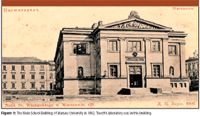
Figure 1
E. Soczewinski disclosed interesting information about the University of Warsaw (Figure 1) (8). It was started in 1816 as a Polish school but was closed after the 1830 uprising against Russian occupation and reopened only in 1862. In 1869, it was transformed into an Imperial University, now with Russian as the teaching language, and the Polish professors also were forced to teach in Russian or resign. This is the period when great effort was made in the Russification of the various ethnic groups within Imperial Russia. For example, Russian scholars joining Warsaw University as faculty members even received some supplementary payment and the requirements for faculty members were lowered. Professorial appointments for Russians in Warsaw could be obtained with only a master's degree (at the time of his appointment, Ivanovskii also had only this degree; he made his doctorate only a few years later). This forced trend is well reflected in the number of professors with Polish ethnic origin at Warsaw University: in 1870 there were 36; in 1880, 24; and in 1910, only one.
Tswett's starting position was only that of a laboratory assistant, and to supplement his meager salary, he was also teaching at a secondary school. Finally, by the end of 1902, he was accepted as a Privat-Dozent at the University, enabling him to lecture to students.
Except, Ivanovskii Tswett did not know anybody in Warsaw. He was a lonely man and this remained so until his marriage in 1907. Every year starting in 1902 he spent a few months in Western Europe (mainly Germany), visiting universities and libraries, or just on holiday. In Warsaw, he spent practically his whole time at the university, and was working alone. It is interesting to note that all of his scientific publications (we know of a total of 58) were single-authored: he never had a co-author, not even an assistant. Until his marriage, he evidently did not even have a home. When his future wife's mother inquired about her prospective son-in-law, she found out that he was actually living at the university and was sleeping on the table in the botanical study (9).
As soon as he settled down in Warsaw, Tswett continued his investigations of plant pigments, as a follow-up to his master's thesis. His aim was to study them in their native state, separated from the leaves' substrate and from each other. At that time, such studies usually were carried out through chemical treatment, but he felt that such manipulations might alter the original compounds Therefore, his aim was to improve methodology. His philosophy was best summarized in his often cited statement (10):
"Any scientific advance is an advance of the method." Regretfully, the method is not infrequently the weakest aspect of scientific research. Each generation inherits, as students do, techniques of the previous generation, and without subjecting them to serious criticism, being satisfied by the fact that they are generally accepted. They use them to obtain new results that win recognition by contemporaries, but have no lasting value."
In his master's thesis, Tswett dealt with the well-known phenomenon that not all solvents can dissolve chlorophyll from leaves. Scientists presented different explanations for the failure of some solvents and the success of others. However, Tswett rejected these hypotheses and pointed to adsorption effects as the reason for the permanent bonds. According to him, the pigments were bound by adsorption to the substrate of the leaves and the strength of adsorption of the individual pigments was different. To override these forces, one needs solvents with sufficient dissolution power, stronger than the adsorption forces. Chlorophyll is strongly adsorbed and one needs a polar solvent, for example, ethanol, for this purpose. At the same time, the carotenes are adsorbed more weakly and, thus, even nonpolar solvents (for example, ligroin or petrol ether) are sufficient for their dissolution from the leaves.
From this explanation, the validity of which he demonstrated by various experiments, it was only one step to conclude that one should be able to imitate this process and use selective adsorption–desorption, using the proper adsorbent and solvents, for the separation of plant pigments. After systematic work for over a year, he had sufficient data to prepare a report for discussion with his colleagues. This was the paper he presented on March 8, 1903, at the meeting of the Warsaw Society of Natural Scientists, summarizing his results on "a new category of adsorption phenomena and their application to biochemical analysis" (2). However, as I already mentioned, he did not use the term "chromatography" in this paper. Also, he had not yet decided which of the two possible techniques — adsorption precipitation or adsorption filtration — should be preferred.
Realization of the Chromatographic Technique
Tswett considered his lecture of March 1903 as an interim report. Most likely, this was the reason that he did not publish his results in any German or French scientific journal, not even in a Russian journal distributed nationwide. The text of his lecture was eventually printed in the reports of the Warsaw Society of Natural Scientists (3), a local periodical, published irregularly (the particular issue indicates 1903 as the year, but it was actually published only two years later, in 1905). Thus, apart from his colleagues in Warsaw who attended his lecture (there were a total of 41 present, most likely also including students), nobody else knew about his work. [Tswett's paper was republished in Russian in 1946 in a collection of his papers (11). Finally, in 1954, the chromatography supply house M. Woelm, in Eschwege, Germany, published its English (and German) translation as a company brochure (12)].
After his lecture, Tswett continued his work on the new separation process. He systematically tried out 128 substances to see whether they could be used as adsorbents and focused on three as the most suitable: inulin, calcium carbonate, and alumina. He found that they behaved differently and the selection should depend on the pigment mixture to be separated. He also slowly started to favor the dynamic process (adsorption filtration) and gradually introduced the new technique to his investigations of the pigments present in various plants. However, apart from his 1903 lecture, he did not publish anything from 1902 to 1904.
Meanwhile, politics also interfered with Tswett's activities. The start of the war between Russia and Japan, at the beginning of 1904, was followed by disturbances in Russia, and this also was felt at the universities. By the fall of 1904, the students disrupted classes and, by January 1905, an open revolt broke out in Russia, further disrupting the activities of the schools. Warsaw University was closed by authorities for the school year of 1905–1906 and students were denied access to the university buildings. Professors and instructors still had opportunity to continue their research and work in the laboratories, but the continuous unrest certainly affected their activities. From 1903 to 1907, Tswett spent a few months each year in Germany, going to libraries to check the newest periodicals and books unavailable in Warsaw, and also was active in conducting research there. For example, he spent some time at the University of Kiel, in the laboratory of Professor J. Reinke, collecting algae in the harbor (Figure 2), and also in Berlin, collecting samples of a plant along the Spree River, and was investigating the pigment contents of these plants. But he still did not publish reports on his technique and results. Then, in 1905, the situation changed.
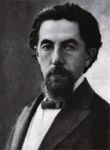
Figure 2: M.S. Tswett in Kiel, Germany, in 1905.
At that time, Hans Molisch (1856–1937) was one of the most respected botanists in Europe: between 1894 and 1908 he served as professor and head of the Institute of Plant Physiology at the University of Prague, and from 1908 until his retirement in 1926 in the same position at the University of Vienna (Figure 3). Molisch had just published a paper on the pigments of brown algae (13) and evidently, Tswett (most likely, based upon his investigations in Kiel) disagreed with some of his conclusions. Therefore, he submitted his critical comments to the journal where Molisch's paper was published, stating that his own investigations, using a "new, reliable method," disprove Molisch's results; however, he did not give any further details (14). This paper opened a beehive. Molisch immediately answered it, rejecting all of Tswett's criticisms, and stating that one cannot refer to a method what nobody knows (15). Soon F.G. Kohl (1855–1910), professor of botany at the University of Marburg/Lahn, in Germany, also entered the ring. He questioned how Tswett, a practically unknown upstart, dared to criticize Molisch, an internally known and renowned scientist, without any concrete data (16). Kohl also expressed his indignation that Tswett did not cite his book on carotenes published in 1902 (that had nothing to do with the dispute). Tswett responded to both objections in one paper (17). In this, he repeated his criticisms of Molisch's work and then stated that his own investigations were actually carried out by using two new techniques: a differential method (that is, the adsorption precipitation technique) and a new adsorption method (that is, adsorption filtration). He also stated that until now these methods were only described in a Russian publication (citing his 1903 lecture), but that a German publication was in preparation.
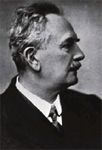
Figure 3: Hans Molisch (1856â1937).
It is interesting to see the quick succession of these relatively brief, polemic papers — it appears as if Tswett suddenly awakened and was ready to fight. Indeed, within two months he submitted to the journal of the German Botanical Society his two fundamental papers, the centenary of which we are celebrating (4,5): they were received by the editorial office on June 21 and July 21, respectively, and published in the fall in two consecutive issues of the journal (Figure 4).
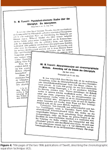
Figure 4
In most publications on the history of chromatography, the second paper (5), entitled "Adsorption Analysis and the Chromatographic Technique: Application to the Chemistry of Chlorophyll" is emphasized, because that contained the detailed description of chromatography, the apparatus used and the results of separation when a pigment solution was analyzed. However, the first paper, entitled "Physico-Chemical Studies of Chlorophyll: The Adsorptions" (4) is even more interesting, because it gives the background, outlines the way how Tswett reached his conclusions, and his hypothesis on selective adsorption and the effect of various solvents. The following quotation from this paper gives a wonderful summary of chromatographic separation:
"There is a definite adsorption sequence according to which the substances can displace each other. The following important application is based on this law. When a chlorophyll solution in petrol ether is filtered through the column of an adsorbent (I am mainly using calcium carbonate, tightly packed into a narrow glass tube), then the pigments will be separated from the top down in individual colored zones, based on this adsorption sequence, according to which the pigments which are adsorbed stronger will displace those which are retained more weakly. This separation will become practically complete if, after the pigment extract was passed through the adsorbent column, the latter is washed with pure solvent."
Continuing, Tswett then had his most famous statement on the name of the new technique (italics mine):
"Like light rays in the spectrum, the different components of a pigment mixture, obeying a law, are separated on the calcium carbonate column and can thus be qualitatively and quantitatively determined. I call such a preparation a chromatogram and the corresponding method the chromatographic method."
There have been some speculations why Tswett selected this name for the technique. "Chromatography" is composed from two Greek words, chroma meaning "color" and graphein meaning "to write." Thus, the word means "color writing." Historically, it had not been unusual to coin Greek words to define some scientific term, and because chromatography of a pigment mixture indeed produces individual color rings in the column (Tswett's second 1906 paper actually showed an illustration of a chromatographic column with the multicolored rings), the term seems to be logical. However, just two paragraphs later, Tswett emphasized that the technique is not restricted to the separation of colored pigments, it also can be used equally well to separate colorless chemical compounds; in other words, the "colored rings" are not a quintessential characteristics of the technique.
Some time ago, another explanation also was suggested for Tswett's selection of this name (18). The interesting fact is, namely, that Tswett's surname is identical to the Russian word for "color" (tsvet) (the spelling "Tswett" generally used by him corresponds to the German orthography). Thus, "chromatography" also can be interpreted as "Tswett's writing." Howard Purnell also mentioned this possibility 40 years ago, adding that it would be nice to think that Tswett, through the double meaning of chroma = tsvet, "took advantage of the opportunity to indulge his sense of humor" (19).
Aftermath
Our aim was to point out the gradual steps in Tswett's work that eventually led to the development of chromatography and to the two fundamental papers the centenary of which we are celebrating this year. Tswett's further activities in the subsequent decade are not our subject, there is plenty of literature dealing with it. Still, we cannot finish our discussion without pointing to the difficulties Tswett had with the acceptance of his work.
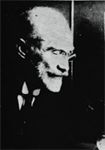
Figure 5: Leon Marchlewski (1869â1946).
One would think that the logical and clear explanations in Tswett's papers convinced his opponents about the advantages of the new technique, particularly because the following year, he personally demonstrated the chromatographic technique twice, at the May 30 and June 28 meetings of the German Botanical Society, in Berlin, to a wide audience. This, however, did not calm down his critics; in fact, newer and even stronger voices joined the camp of his opponents. In his papers, Tswett (mildly) criticized previous work of Marchlewski and Schunck and he obtained an immediate (and very acerbic) rebuttal by Leon Marchlewski (1869–1946), at that time professor at the Jagiellonian University of Cracow, in the part of Poland belonging to the Austro-Hungarian Monarchy (Figure 5). Marchlewski studied at the Federal Technical University in Zurich, Switzerland, and worked for years in England with E. Schunck, an early researcher of the chemistry of chlorophyll. In a polemic answer to Tswett's papers, he ridiculed the new technique, and warned Tswett that he should not believe that "a simple filtration experiment" would be enough "to swing himself to the height of a reformer of chlorophyll chemistry" (20). (It is an open question how much Marchlewski's antagonism was due to vanity, feeling of personal insult, or patriotism. Within the Austro-Hungarian Monarchy, the University in Cracow was a Polish school, with wide autonomy, and Marchlewski was a very patriotic Pole, naturally opposing Tswett as a Russian, in the Russian-occupied part of Poland, where the Polish language and national spirit was suppressed.) An even more important — although more dignified — opponent of Tswett was R. Willstätter (1872–1942), at that time probably the most respected German organic chemist who at that time felt that he was the authority in chlorophyll research; in 1915, he indeed received the Chemistry Nobel Prize for this work (Figure 6). Willstätter called chromatography "an odd way" to perform pigment research and stated, that chromatographic separation was not reliable because chemical changes were occurring during it (21). [Richard Kuhn, one of Willstätter's students, admitted 50 years later that they simply used the wrong adsorbent (22).] In the first decade after Tswett's publication, chromatography was accepted only by a couple of scientists, most notably by Charles Dhéré, in Switzerland, and Leroy S. Palmer, in the United States. It took one generation and needed change in the philosophy of organic and biochemical research until it could become a universally accepted and used technique.
Finally, a few words about Tswett's personal life. As already mentioned, he married in 1907; in that year he left Warsaw University, becoming associated with the Veterinary Institute and then next year, with the Warsaw Polytechnic Institute. In 1910, he published his major book, summarizing the results of his research (23) for which he received a Russian scientific prize. Slowly, Tswett's health started to decline and he was forced to reduce his activities. In 1915, he had to leave Warsaw before the advancing German troops, moving temporary to Moscow and Nizhnii Novgorod. Finally, in 1917, he obtained an appointment as a full professor at the highly respected University of Tartu (in present-day Estonia; then part of Russia). He moved to Tartu, but within a year he was again on the road because of German occupation of the Baltic area. By then Tswett's health further deteriorated and he died on June 26, 1919, in Voronezh. His memory is, however, alive through chromatography, the method he created, which is one of the major scientific accomplishments of the 20th Century.
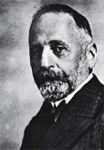
Figure 6: Richard Willstatter (1872â1942).
Acknowledgment
I would like to express my appreciation to Dr. E. Soczewinski, Professor Emeritus at the Medical Academy, Lublin, Poland, for providing the contemporary picture post card shown in Figure 1. I received the photograph of Tswett shown in Figure 2 from the late K.I. Sakodynskii (1930–1996) who in turn obtained it from E.A. Lyashenko, the niece of M.S. Tswett. The other three photographs are from my own collection.
From 1988 to 2004, "Milestones in Chromatography" editor Leslie S. Ettre was associated with the Chemical Engineering Department of Yale University (New Haven, Connecticut), first as an adjunct professor and then as a research fellow. Previously, he had been with the Perkin-Elmer Corporation for 30 years. He is currently a member of LCGC's editorial advisory board. Direct correspondence about this column to "Milestones in Chromatography," LCGC, Woodbridge Corporate Plaza, 485 Route 1 South, Building F, First Floor, Iselin, NJ 08830, e-mail lcgcedit@lcgcmag.com
References
(1) L.S. Ettre, LCGC 21(5), 458–467 (2003).
(2) M.S. Tswett, On a New Category of Adsorption Phenomena and their Application to Biochemical Analysis. Lecture at the March 8 (21), 1903, meeting of the Biological Section of the Warsaw Society of Natural Scientists.
(3) M.S. Tswett, Trudy Varshavskogo Obshchestva Estestvoispytatelei: Otdelenie Biologii 14, 20–39 (1903) (published in 1905).
(4) M.Tswett, Ber. Dtsch. Botan. Ges. 24, 316–326 (1906).
(5) M. Tswett, Ber. Dtsch. Botan. Ges. 24, 384–392 (1906).
(6) M. Tswett, Bull. Lab. Botan. Gen. Univ. Genève 1(3), 125–206 (1896).
(7) M.S. Tswett, Trudy Obshchestva Estestvoispytatelei pri Imperiatorski Kazanskom Universitet 35(3), 1–268 (1901).
(8) E. Soczewinski, Chim. Anal. (Warsaw) 39, 105–109 (1994).
(9) E.M. Senchenkova, Michael Tswett, the Creator of Chromatography (Russian Academy of Science, Moscow, 1997), p. 103.
(10) V.G. Berezkin, Editor, Chromatographic Adsorption Analysis: Selected Works of M.S. Tswett (Ellis Horwood, New York, 1900), p.40.
(11) A.A. Rikhter and T.A. Krasnosel'skaya, Eds., M.S. Tswett: Chromatographic Adsorption Analysis. Selected Works (USSR Academy of Science, Moscow, 1946) (in Russian).
(12) G.Hesse and H. Weil, Eds., Michael Tswett's First Paper on Chromatography (E.Woelm, Eschwege, 1954).
(13) H. Molisch, Botan. Z. 64(I), 131–162 (1905).
(14) M. Tswett, Botan. Z. 64(II), 273–278 (1905).
(15) H. Molisch, Botan. Z. 63(II), 369–372 (1905).
(16) F.G. Kohl, Ber. Dtsch. Botan. Ges. 24, 124–134 (1906).
(17) M. Tswett, Ber. Dtsch. Botan. Ges. 24, 235–244 (1906).
(18) D.J. Campbell-Gamble, Chem. Ind. 59, 598 (1940).
(19) H. Purnell, Gas Chromatography (Wiley, New York, 1962), p.1.
(20) L. Marchlewski, Ber. Dtsch. Botan. Ges. 25, 225–228 (1907).
(21) R. Willstätter and A. Stoll, Untersuchung über Chlorophyll: Methoden und Ergebnisse (Springer, Berlin, 1913).
(22) R. Kuhn, Zur Entwicklung von Trennverfahren, in Gas Chromatography 1962, M. Van Swaay, Ed. (Butterworths, London, 1962), pp. xvii–xxvi.
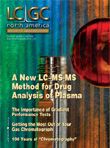
Determining the Serum Proteomic Profile in Migraine Patients with LC–MS
April 17th 2025Researchers used liquid chromatography–mass spectrometry (LC–MS) in their proteomic analysis to compare the serum proteome of migraine patients with healthy controls and to identify differentially expressed proteins as potential migraine biomarkers.
Thermodynamic Insights into Organic Solvent Extraction for Chemical Analysis of Medical Devices
April 16th 2025A new study, published by a researcher from Chemical Characterization Solutions in Minnesota, explored a new approach for sample preparation for the chemical characterization of medical devices.











